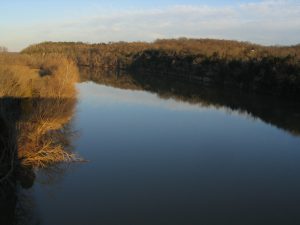Most farmers are big supporters of the safe, efficient, and judicious use of crop-protection tools. They don’t spray pesticides because they want to twirl their evil-guy mustaches and roll around in their vaults of money (fine, they would like to roll around in vaults of money, but overusing pesticides isn’t going to get you a vault). Agrochemicals help them grow our abundant, nutritious, and safe food supply. Measured use of pesticides allows us to protect the environment and pass our farms to the next generation.
So when the U.S. Environmental Protection Agency makes moves to effectively end the use of an important herbicide, agriculture speaks out. That’s precisely what happened with the agency’s proposed change to the use of atrazine.
A quick recap
The EPA regulates pesticides under the Federal Insecticide, Fungicide, and Rodenticide Act (FIFRA). The agency performs regular and on-going comprehensive reviews of chemicals used commercially in agriculture. It then adopts recommendations for the safe and efficient use of these pesticides, which are printed on the product’s label and must be followed by a licensed applicator. For about 75 years, this regulatory scheme has served us really well.
At issue is the EPA’s assessment under the Atrazine Ecological Exposure Monitoring Program. The program’s goal is to monitor herbicide levels in watersheds exposed to runoff. If herbicide levels are too high, it can interfere with the aquatic-plant community structure, function, and productivity. So the EPA monitors these levels within 33 watersheds in nine states.

The key metric is the Concentration Equivalent Level of Concern (CE-LOC). It’s the 60-day average concentration of atrazine levels found in aquatic environments. Industry stakeholders learned that the EPA planned to propose a drastically reduced CE-LOC, despite the fact that the current CE-LOC was established on a rigorous scientific foundation.
In short, it seemed like the EPA was playing politics.
Atrazine is too important for modern agriculture to play partisan games. Used primarily on corn, sorghum, and sugar cane, it’s an herbicide that farmers have safely used for well over 60 years. Atrazine is versatile because farmers can apply it both before and after the crop sprouts, and it targets difficult broadleaf and grassy weeds. It’s hard to overstate atrazine’s usefulness in protecting crops, supporting soil-friendly practices, fighting weeds, and shoring up food security.
Despite that — and in the face of criticism — the EPA moved forward with proposing a CE-LOC that was so low it threatened to drastically reduce the herbicide’s availability for U.S. farmers.
Whenever such a change is anticipated, federal agencies are required to accept public comments on it. So earlier this year, that’s what the EPA did. These comments are important because of an agency is believed to have failed to adequately consider the comments it received, a judge may invalidate the rule.
The comments
There was a common theme within the pro-atrazine comments submitted to the EPA: science. Many commenters begged the EPA to make a decision about atrazine that was supported by thorough scientific research and studies, and asked the agency to submit the evaluation to an independent scientific advisory panel.
The North Dakota Department of Agriculture’s comment reflected these concerns:
Any reasonable CE-LOC is meant to be an acceptable scientific-based regulatory threshold imposed to adequately protect aquatic ecosystems from potential herbicide injury…Any CE-LOC not solidly supported by the best science available is arbitrary and capricious.
However, after the change in presidential administrations, EPA then chose to reevaluate the atrazine 15 ppb CE-LOC it previously set and established less than two years earlier in late 2020. Less than eighteen months into this new administration, EPA issued its newly proposed scientifically unsupported atrazine restrictions.
Despite that there has been no subsequent change in the science — and with apparently little to no feedback from the public, states, farmers and other members of the regulated community, outside scientific advisors, industry, the U.S. Department of Agriculture, or any other primary stakeholders — EPA, deliberating in strict self-imposed isolation, determined the atrazine aquatic ecosystem CE-LOC in watersheds should be substantially reduced to an ultra-low level of 3 .4 ppb.
Another theme also emerged: This is going to hurt U.S. agriculture. Gov. Laura Kelly from Kansas had farmers at the top of mind with her comment:
Over the past 64 years, atrazine has been studied time and time again. Nearly 7,000 scientific studies have established its safety. It is critical that our country’s regulatory processes be based on sound science and credible data. The proposed changes to the usage levels of atrazine ignore proven scientific data and jeopardize Kansas’ farmers’ ability to continue to be a worldwide leader in producing safe, bountiful crops and the livestock those crops feed. They also threaten the Kansas agricultural community’s recent achievement of producing over $5 billion in agricultural exports for the first time in recorded history.
You can view the nearly 500 comments left by others here. The list includes some pretty impressive names from agriculture, all of whom urged the EPA to abandon this course of action.
But now its the EPA’s turn. As the next growing season approaches, farmers across the country are waiting in anticipation of this decision.
Amanda Zaluckyj blogs under the name The Farmer’s Daughter USA. Her goal is to promote farmers and tackle the misinformation swirling around the U.S. food industry.



